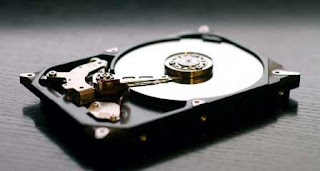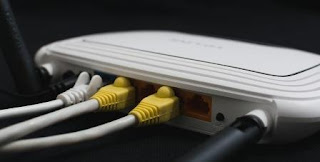Computer Memory
Memory - The data and instructions that are entered into the
computer system must be stored inside the computer before the actual processing
can start. Similarly, the results produced after processing must also be stored
before they can be passed on to the output unit. Computer has two basic types
of Memory Primary Memory (RAM, ROM) Secondary Memory (Hard drive, Memory
card).
Functions of the primary memory
- All data and instructions to be proceed.
- Intermediate results of processing
- Final results before sending them to output devices
Types of Computer Memory
 |
| Types of Computer Memory |
Computer Memory
- Primary Memory
- Secondary Memory
PRIMARY MEMORY - Primary memory is volatile (not permanent) memory.
All instructions at first reach in Primary Memory. All the information will be
lost if power is gone.
Types of primary memory
RAM - Random Access Memory is a read/write memory. Information can be written
into and read from a RAM. It is a volatile memory which means, that it retains
the stored information as long as the computer is connected to a power supply
source. When power supply is switched off or interrupted the stored information
in the RAM is last. RAM is available in various capacities, for example, 4 GB,
8 GB and so on.
Types of RAM
- SRAM
- DRAM
SRAM – SRAM stands for Static Random Access memory. SRAM storage
is based on the logic circuit known as Flip-flop, which retains the information
stored in it as long as there is enough power to run the device. They do not
need refreshing circuitry and have higher speed than dynamic RAM.
DRAM - Dynamic random access memory (DRAM) loses its stored information in a very short time (a few
milliseconds) even when the power supply is on. Therefore, dynamic RAMs have to
be refreshed periodically; generally every 2 milliseconds Dynamic RAM are
cheaper and have high packing density with moderate speed. They also consume
less power and are used when a large capacity of memory is needed.
ROM - ROM
stands for Read Only Memory. ROM is a permanent type of memory. ROM is a class of storage media used
in computers and other electronic devices. ROM is mainly used to
distribute firmware (software that is very closely tied to
specific hardware and unlikely to require frequent updates). All the
starting instructions (Booting instructions) are stored in ROM. These
instructions are built into the ROM by the company during manufacturing time.
Types of ROM
- PROM (programmable read-only memory)
- EPROM (erasable programmable read-only memory)
- EEPROM (electrically erasable programmable
read-only memory)
For detail information about ROM kindly visit Wikipedia
Secondary Storage – You cannot store data in the main memory of a pc permanently.
Firstly because it is very expensive and secondly its contents are erased when
computer is turned off. In order to store information permanently you need
storage media such as Hard Disk, CD, DVD, Pen Drive etc.
Types of Secondary Storage
- Hard Disk Drive
- CD
- DVD
- Pen Drive
- Memory Card
Storage Techniques
Magnetic Tape is a sequential storage device but
now it is outdated from market. Hard Disk is Random Access Device. CD/DVD has
Optical storage technique.
Hard Disk - A hard disk drive (HDD) is an
electro-mechanical data storage device that uses magnetic
storage to store and retrieve digital data using one or more
rigid rapidly rotating platters that are coated with magnetic
material that allows
data to be magnetically recorded on the surface of the platters. The hard disk
platters spin at high rate of speed, typically 5400 to 7200 revolutions per
minute (RPM). The storage capacity of the hard disk for the personal computer
ranges from 500 GB to 4 TB.
CD (Compact Disk) - Their storage capacity is 700 MB. Since it is very
reliable storage media, it is very often used as a medium for distributing
large amount of information to large number of users. In fact today most of the
software is distributed through CDs.
DVD Digital Versatile Disk (DVD) - It is similar to a CD but has
larger storage. A normal DVD can store 4.7 GB of data while
a SDVD (Super DVD, also called dual layer DVD) can store up to 7GB of
data. These are not rewritable media. It is also known as Digital Video
Disk.
Pen Drive – Pen drive also known as USB flash drive is a
small removable rewritable drive. Pen drive is available in various sizes from
8GB to 512GB.
Memory Card - A memory card is an
electronic data storage device used for storing digital information.
These are commonly used in portable electronic devices, such as digital
cameras, mobile phones, computers, tablets, video game consoles.










Comments
Post a Comment